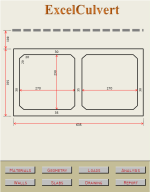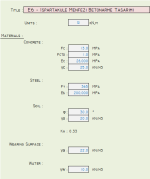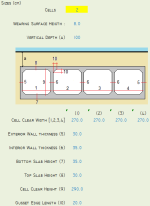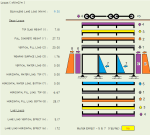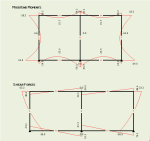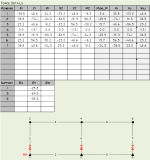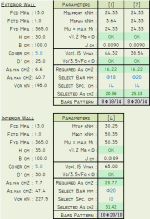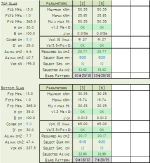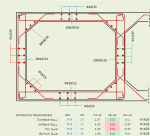Concrete Box Culvert analysis and Design
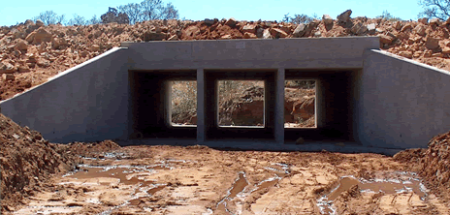
Description
A culvert is a structure that allows water to flow under a road, railroad, trail, or similar obstruction. Typically embedded so as to be surrounded by soil, a culvert may be made from a pipe, reinforced concrete or other material. A structure that carries water above land is known as an aqueduct.
02/11/2013 Added to the report page. version 1.1
Calculation Reference
Tunnel Design
The analysis and design of a concrete box culvert typically involves the following steps:
- Determine the design loads, which include the weight of the culvert itself, the weight of the soil above the culvert, and any additional loads that may act on the culvert.
- Determine the dimensions of the culvert, including the span, height, and width.
- Determine the soil properties, such as the soil type, unit weight, angle of internal friction, and cohesion.
- Determine the required strength of the culvert by applying a factor of safety to the design loads, typically ranging from 1.5 to 2.0.
- Determine the required reinforcement for the culvert based on the strength requirements and the culvert dimensions.
- Prepare construction specifications and drawings for the culvert.
The analysis and design of a concrete box culvert can be further refined by considering other factors, such as the presence of groundwater, the effect of soil stratification, and the effect of soil consolidation. The analysis can also be performed using computer software or spreadsheet programs, which can provide more accurate and efficient results.
Overall, the analysis and design of a concrete box culvert provides a systematic and reliable approach to design and construct drainage structures that can safely and effectively convey water and other materials.
Calculation Preview
Full download access to any calculation is available to users with a paid or awarded subscription (XLC Pro).
Subscriptions are free to contributors to the site, alternatively they can be purchased.
Click here for information on subscriptions.

